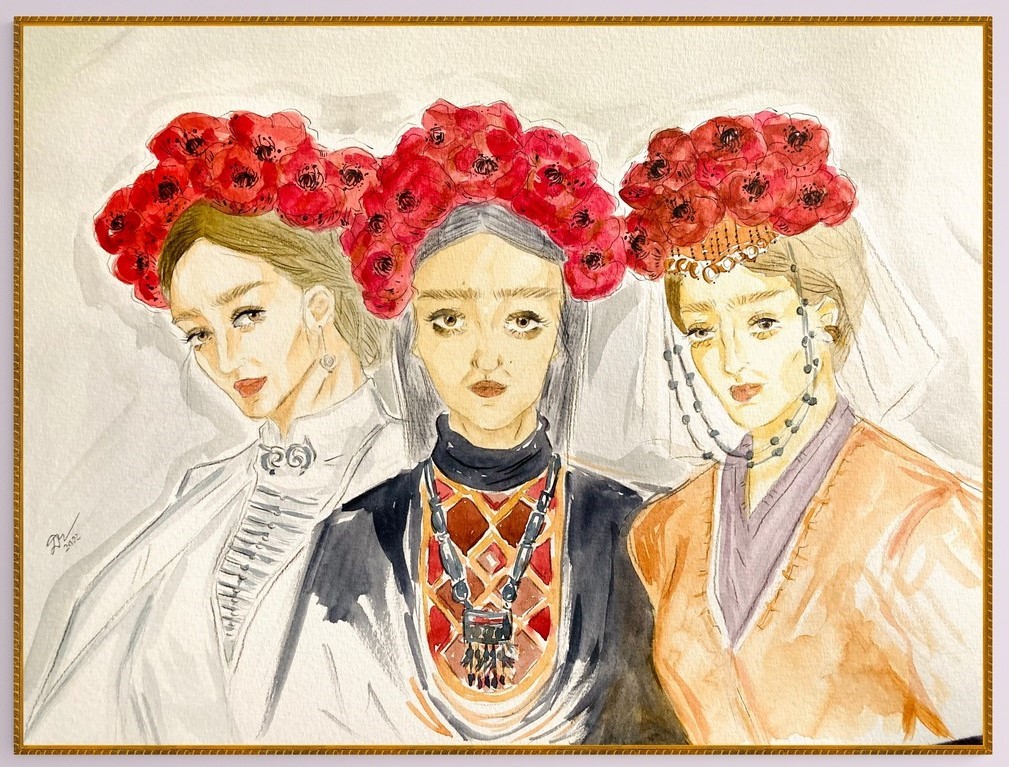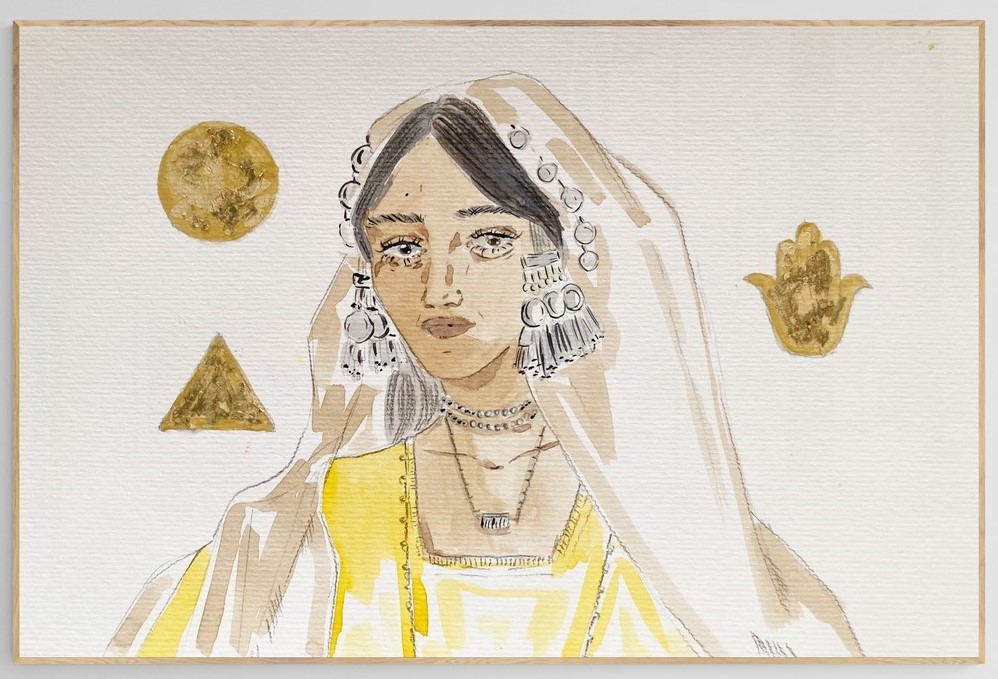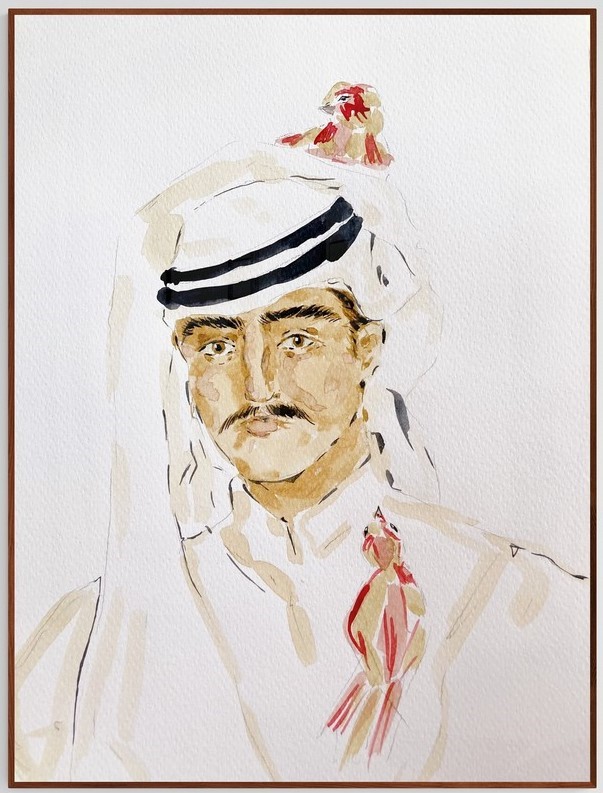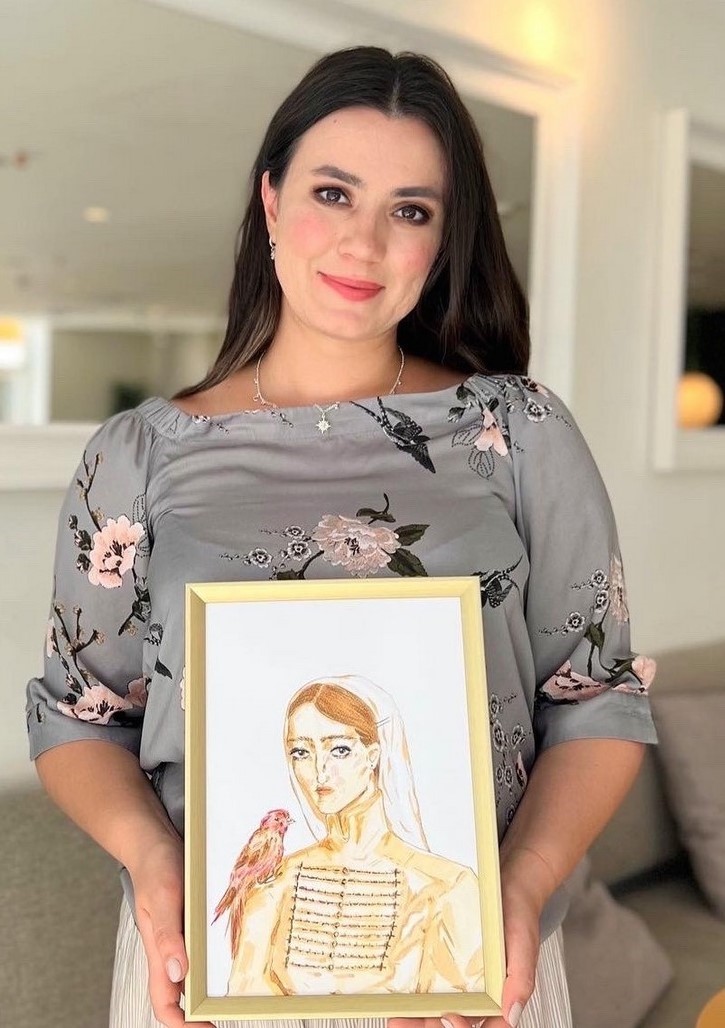In her search for
identity, Diana Ishaqat, a development practitioner, researcher, and artist,
brings to the table a goal: to mainstream and highlight Jordan’s diversity
beyond purely folkloric forms.
اضافة اعلان
Through a series of portraits and paintings done
with different media — including
coffee, which she said gives pieces a “local”
edge — Ishaqat portrays different individuals who form Jordan’s social fabric.
Whether Arab, Circassian, Chechen, Armenian, Kurd, or Bani Murra (a member of a
local historically nomadic group), Ishaqat works to give people a space to be represented
in visual spaces harmoniously.
“People crave representation, to see themselves
reflected in public spaces beyond those of their homes and neighborhoods,” she
believes. And she gives them that space.
The portraits may present the uniqueness of different
heritages, but there is always a link that binds them all; most often, in her
case, Jordan’s national bird, the Sinai rosefinch.
 Diverse women from Jordan: a Circassian, a Bedouin, and an Armenian (left to right) with poppy flower crowns; a popular wild spring flora.
Diverse women from Jordan: a Circassian, a Bedouin, and an Armenian (left to right) with poppy flower crowns; a popular wild spring flora.
Aware that, like her, many were unaware — “before
this series, I did not even know there was a national bird” — Ishaqat decided
to explore the subject and incorporate it into her art.
Ishaqat, who grew up in Bayder Wadi Al-Seer — a
“working class, industrial area” — was inspired by the diversity of her own
experience in the neighborhood.
“There were people from
Sri Lanka to Russia,” she
said, recalling how different languages could be heard all around.
“All of us shared. It was normal to interact with
people who were really different.”
Reflecting this diversity, her works stir the
interest of Jordanians and foreigners alike. Her pieces were sold as far away
as the US, UK, Turkey, Italy, Germany, and Jordan. Most, however, were bought
by “people in diaspora”, she said.
 A woman who is part of a traveler community known as Bani Murra, with the gold symbols.
A woman who is part of a traveler community known as Bani Murra, with the gold symbols.
Youths, in particular, have been most interested in
Ishaqat’s work. She credits their interest exactly to the diversity her work
presents.
“Diversity is not discussed in our education
systems,” she said, adding that minorities “are mentioned twice in our
curricula, without further information or details”.
“We know — hypothetically — that Circassians, Chechens,
Armenians, Kurds, amongst others, live amongst us. But we know nothing beyond
the fact that they are there,” she said.
This may create a sense of alienation amongst
communities, said Ishaqat.
Art can help build self-esteem, can ground people to a place, and remind people of values that incorporate pride and belonging.
“Young people do not know how to approach questions
about identity, since the unifying platform, the education system, did not
provide the opportunity for them to explore (them).”
And that is where her art came to create an
alternate place for open dialogue and attempts to find answers without
restrictions.
Ishaqat’s paintings, with their granular texture,
endeavor to portray tradition and heritage, but also to give way to modern
lifestyle, which is more easily recognizable by younger viewers. This
confluence gives her art a capturing edge.
Only when taking pride in the past can a society
feel that it belongs, she believes.
“We like to think of heritage as a thing of the
past, but people need it to feel grounded in the present,” she said.
Ishaqat is currently exploring the option of
creating an online platform (through either a shop or a brand) to expand on the
already existing brands that explore heritage by bridging the gap to modern
times.
“I like to look at heritage as something evolving,
reaching the present. Something that newer generations are building on,” she
said.
 Jordanians dressed in Arab clothes, painted in coffee together with the Sinai Rosefinch.
Jordanians dressed in Arab clothes, painted in coffee together with the Sinai Rosefinch.
“We often hear people blame the youths for the loss
of culture and identity,” she said, which is why her emphasis remains on
finding new ways to incorporate things from the past, “especially those we
never thought could be seen in a new light”.
Youth involvement
in this form of representation is in response to the realities they have to
experience and overcome, said Ishaqat, pointing to unemployment, and fewer
chances of upper-social mobility, as two of the more intractable problems young
people face nowadays.
“It is difficult for young people to sit and reflect
on bigger ideas like identity or climate, for example. … But if you are
uncertain about what comes next and your reality is bleak and difficult to
identify with, how do we expect the youth to participate?”
Art, is one way to go about it, she believes.
“Art can help build self-esteem, can ground people
to a place, and remind people of values that incorporate pride and belonging.”
And youth want to interact with such spaces, she
said.
 Diana Ishaqat in an undated photo.
Diana Ishaqat in an undated photo.
“Young people know what they are looking for.”
This artist should know; she is part of this age
group, identifies with her peers, and strives to make it a better place for
all.
“Art creates beauty and acceptance that is normally
difficult to find in one place.”
This up-and-coming artist who has been painting for a long
time exhibits her works on Instagram and Facebook
@diiashkk.
Read more Culture and Arts
Jordan News



